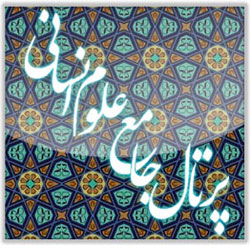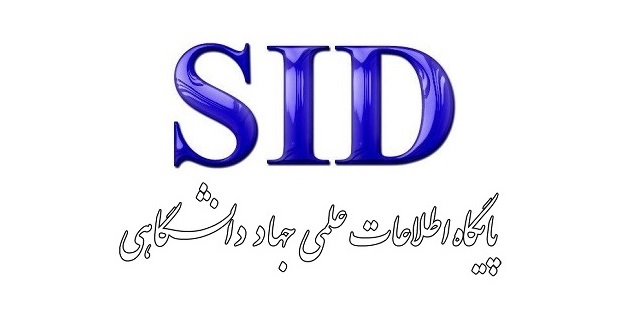بررسی ویژگیهای هویتی فضاهای شهری با رویکرد پدیدار شناسی (نمونه موردی: بازار روز خرم آباد )
کلمات کلیدی:
فضاهای شهری, پدیدار شناسی, بازارهای شهری, بازار روز, خرم آبادچکیده
این مقاله بررسی ویژگیهای هویتی فضاهای شهری وتجربههای زیسته شهروندان و کسبه با رویکرد پدیدار شناسی در بازار روز خرم آباد است. نوع تحقیق بهصورت کاربردی و ماهیت آن توصیفی-تحلیلی طراحی شده است. برای گردآوری اطلاعات، از روشهای میدانی و کتابخانهای استفاده شده است. ابزارهای تحلیل دادهها شامل نرمافزارهای SPSS و اکسل هستند که برای تجزیه و تحلیل دادههای کمی به کار گرفته میشوند. در این پژوهش، از مدلهای آماری مختلف مانند آزمون تی و مدل مارکوس برای ارزیابی و رتبهبندی ویژگیهای هویتی بازار روز استفاده شده است. نتایج نشان میدهد که نتایج آزمون تی نشاندهنده وضعیت مثبت احساس تعلق به فضای شهری در بازار روز خرمآباد است، با میانگین 3.1 و آماره t برابر با 1.021 و سطح معنیداری 0.005. همچنین، تعاملات اجتماعی با میانگین 3.25 و آماره t برابر با 2.341 و سطح معنیداری 0.002 نشاندهنده تعاملات مثبت اجتماعی هستند. دسترسی به خدمات اجتماعی نیز با میانگین 3.5 و آماره t برابر با 4.274 و سطح معنیداری 0.001 تأییدکننده دسترسی مناسب به این خدمات است. احساس امنیت اجتماعی در فضاهای عمومی نیز با میانگین 3.6 و آماره t برابر با 3.562 نشاندهنده اعتماد بالای افراد به امنیت این فضاها است.در مقابل، تنوع فرهنگی با میانگین 2.8 و آماره t برابر با -2.441 و سطح معنیداری 0.001 بیانگر ضعف در این بعد است. همچنین، نتایج مدل مارکوس نشان دادند که بازار روز دارای درجه مطلوبیت مثبت در ابعاد مختلف هویتی، از جمله تجربه زیسته و تعلق مکانی است.این یافتهها میتوانند به برنامهریزان شهری کمک کنند تا بر روی تقویت هویت فرهنگی و حافظه جمعی تمرکز کنند تا حس تعلق و رضایت شهروندان را افزایش دهند.
دانلودها
مراجع
1. Abizadeh E, Bakhtar S. Identifying drivers affecting identity and sense of place with a futures studies approach (Case study: Kandovan village). Quarterly Journal of Spatial Planning. 2023;13(2).
2. Behdadfar M. Cultural Heritage and Urban Identity: A Comparative Study of Eastern and Western Approaches. Journal of Cultural Studies. 2020;8(1):15-25.
3. Kian M, et al. The Role of Public Spaces in Urban Identity: A Case Study of Contemporary Cities. International Journal of Urban Planning. 2020;4(2):372-80.
4. Ramazani M, Qarebaglu M, Molaei A. The role of third places in enhancing citizens' sense of belonging: A study from Vali Asr Square to Vali Asr Street intersection in Tehran. Quarterly Journal of Architecture and Urbanism. 2022;1(2).
5. Akbari A, Hosseini Gohari P, Afahmi R. Phenomenology of urban space production in the lived experiences of Tehran citizens regarding cultural public spaces. Scientific Journal of Urban Design Discourse. 2023;4(2).
6. Mohammadi M. A phenomenological analysis of the morphological dimensions of place in the entrances of Tehran city. Scientific Journal of Urban Ecology Research. 2020;11(2).
7. Sahaf, et al., editors. Explaining the phenomenological sense of place based on human lived experiences (Case study: Shohada Square, Mashhad). Khorasan Research Journal; 2023.
8. Sharifzadeh MR, Salimi M, Bonyardlan I. Phenomenology of sacred places with a focus on Iranian-Islamic architecture (Case study: Sheikh Lotfollah Mosque, Isfahan). Scientific Journal of Islamic Mysticism. 2020;16(63).
9. Pour Mohseni A, Habib F, editors. Factors influencing the sense of belonging to urban places from a phenomenological perspective. Sixth International Conference on Research in Science and Engineering and Third International Congress on Civil Engineering, Architecture, and Urban Planning in Asia; 2021.
10. Rehan M. Urban Identity and Historical Connection: A Key to Branding Cities. Journal of Urban Studies. 2014;12(3):45-55.
11. Lefebvre H. The Production of Space: Blackwell Publishing; 2016.
12. Masterson VA, Enqvist JP, Stedman RC, Tengö M. Sense of place in social- ecological systems: From theory to empirics. Sustainability Science. 2019;14:555-64.
13. Tan SK, Tan SH, Kok YS, Choon SW. Sense of place and sustainability of intangible cultural heritage - the case of George Town and Melaka. Journal of Tourism Management. 2018;67:376-87.
14. Yazdani MH, Ali Pour E, Mahmoudi A. Examining and analyzing the identity of urban neighborhoods with an emphasis on sense of belonging (Case study: Thirteen neighborhoods on the outskirts of Ardabil city). Journal of Sociology of Social Institutions. 2019;6(14).
15. Foroutan, et al. The role of spatial identity components in the economic development of peri-urban areas (Case study: Rasht city). Journal of Development of Peri-Urban Spaces. 2023;5(2).
16. Panahi S, Afalatoonian Za-A. Explaining the visual culture of materials and its role in shaping architectural identity (Based on a phenomenological perception approach). Scientific Research Journal of Geography and Regional Planning. 2022;12(49).
17. Zabihih H, Abdolkarimi Koumeh H, Daneshju K. Explaining effective criteria of hermeneutic phenomenology of place in the architectural design process. Kimiaye Honar Scientific Journal. 2023;12(48).
18. Vink R, Varró K. Running Rotterdam: On how locals' participation in running events fosters their sense of place. GeoJournal. 2021;86(2):963-78.
19. Newell R, Canessa R. From sense of place to visualization of place: Examining people-place relationships for insight on developing geovisualizations. Heliyon. 2018;4(2):1-37.
20. Shahabiyan P, Shahriaree S, Lak A. Understanding the phenomenon of colorlessness in the urban spaces of Tehran megacity through the application of interpretive phenomenology. Environmental Sciences Quarterly. 2023;21(1).
21. Noorollahi M, Barzegar A, Arayesh MB. Proposing a conceptual model emphasizing effective components in the identity of urban facades based on the meta-synthesis method. City Identity Journal. 2022;17(53).
22. Razavian MT, Ghorchi M, Mohammadi Ganj Z. Examining the components that shape citizens' mental images of urban places, with an emphasis on phenomenological and environmental psychology approaches: A comparative study of districts 1 and 18 in Tehran. Journal of Applied Geographic Sciences. 2024;24(72).
23. Mousizadeh, et al. Phenomenology of factors influencing the formation of Iranian-Islamic identity among youth from the perspective of specialists. Biannual Scientific Journal of Educational Sciences from the Islamic Perspective. 2020;8(15).
24. Grenni S, Soini K, Horlings LG. The inner dimension of sustainability transformation: How sense of place and values can support sustainable place-shaping. Sustainability Science. 2020;15:411-22.
25. Salehi Zalani S, Hashemi A, Mirzad A. Examining the urban identity of Ilam and its identity-forming components. Scientific Journal of Ilam Culture. 2019;20(62,63):118-41.
دانلود
چاپ شده
ارسال
بازنگری
پذیرش
شماره
نوع مقاله
مجوز
حق نشر 2025 Mohammad Hadi Ardeshir; Mehrnaz Molavi (Author)

این پروژه تحت مجوز بین المللی Creative Commons Attribution-NonCommercial 4.0 می باشد.









